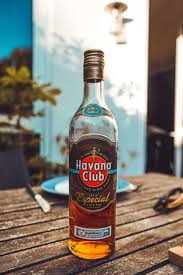Spanish Rum: A Deep Dive into Tradition, Craft, and Culture
Spain is renowned for its rich history of culture, cuisine, and, of course, its beverages. While many people may first think of wines and tapas when imagining Spanish drinks, Spain also has a significant presence in the world of spirits, particularly with its rum. Spanish rum is a fascinating exploration of history, craftsmanship, and unique flavors that have shaped the global rum industry. This article takes a deep dive into the world of Spanish rum, tracing its origins, production methods, the best rum brands, and its role in Spanish culture.
The History of Spanish Rum
Rum’s origins are often tied to the Caribbean, with its introduction to Europe during the 17th century. However, Spanish rum traces its roots back to Spain’s colonial era, particularly in the Caribbean islands where Spain had a significant presence. The Spanish empire established sugarcane plantations in regions like Cuba, Puerto Rico, the Dominican Republic, and other Caribbean islands, and rum production began as a byproduct of the sugar refining process.
In Spain, rum started to gain popularity in the 18th and 19th centuries, following the increasing exportation of rum from the Caribbean. Rum was enjoyed primarily by sailors and workers, but it soon became a staple drink at Spanish gatherings and celebrations. Over the years, Spanish rum began to develop its own distinct character, drawing from the craftsmanship of the producers, who combined traditional methods with unique aging techniques and locally grown ingredients.
The Production of Spanish Rum
The process of making Spanish rum is a meticulous one that relies on the high-quality sugarcane cultivated in the Caribbean regions under Spain’s influence. Spanish rum is primarily made from two ingredients: sugarcane molasses and sugarcane juice. These are fermented and then distilled, usually in pot stills, to create a high-proof spirit. However, what truly sets Spanish rum apart from other varieties lies in the aging process.
Most rums are aged in wooden barrels, but Spanish rum takes this a step further. The rum is typically aged in oak barrels, often previously used for aging sherry or wine. This practice imparts a unique flavor profile to the rum, with hints of dried fruit, nuts, and spices that are characteristic of Spanish wine and sherry culture. The combination of the sugarcane’s natural sweetness and the rich, oak-aged flavor creates a smooth, balanced rum that is appreciated worldwide.
Spanish rum is often known for its smoothness and complexity. Aging times vary depending on the style of rum being produced, with some of the most prized rums spending several years in barrel aging to develop their full range of flavors. The aging process not only adds depth and richness to the flavor but also helps to mellow out the stronger, harsher notes of the spirit, resulting in a smoother, more refined rum.
Popular Spanish Rum Brands
Several iconic rum brands in Spain have helped shape the reputation of Spanish rum globally. These brands have continued to innovate while staying rooted in tradition, showcasing the versatility and excellence of Spanish rum.
- Ron Barceló
One of the most famous Spanish rum brands, Ron Barceló was founded in 1930 in the Dominican Republic. While not originally from Spain, Ron Barceló has become synonymous with Spanish rum thanks to its strong connection to the Spanish market. Known for its wide range of rum offerings, Ron Barceló offers everything from white rum to aged varieties like Ron Barceló Imperial, a dark rum that spends several years in oak barrels. The brand’s commitment to quality and tradition has made it one of the leading rum producers in the Spanish-speaking world. - Havana Club
Havana Club, though associated with Cuba, is another rum brand that has become a staple in Spain. The brand, created by José Arechabala in 1934, has become known for its production of high-quality rum that includes various aged expressions, such as Havana Club 7-Year-Old, renowned for its smoothness and rich flavor. The brand has become increasingly popular in Spain, where it is appreciated for both its history and its versatility in cocktails and sipping. - Licor 43
Licor 43, a unique Spanish liqueur, is often enjoyed as a rum-based drink. Made from a blend of rum, citrus, vanilla, and other secret herbs, Licor 43 is famous for its distinctive flavor. The brand hails from Cartagena, Spain, and has gained international recognition as both a standalone drink and an essential ingredient in cocktails. While it is more of a rum-based liqueur than a traditional rum, Licor 43 offers a glimpse into the innovative uses of rum in Spain. - Puerto de Indias
Though known for its gin production, Puerto de Indias also produces a line of rum that has caught the attention of rum enthusiasts. The brand emphasizes craftmanship, producing rum with a balance of citrus and sweet flavors. With a strong presence in the Spanish market, Puerto de Indias rum continues to make waves due to its smooth texture and balanced flavor profiles. - Bodegas Williams & Humbert
This prestigious Andalusian producer is not only renowned for its sherry but also its rum, particularly through its “Ron Etiqueta Negra” line. With its deep ties to Spain’s sherry-making heritage, this rum brand is characterized by its sophisticated aging process, often incorporating the rich flavors of sherry barrels to enhance the depth of the rum.
The Role of Rum in Spanish Culture
In Spain, rum is more than just a drink; it plays a significant role in both everyday life and in the country’s social gatherings. Rum is commonly enjoyed during family celebrations, festive occasions, and traditional Spanish festivals like the Carnival or Feria de Abril. Whether served as a digestif after dinner or as the base for a refreshing mojito or piña colada, rum is enjoyed across all regions of Spain.
In addition to casual consumption, rum is also a key ingredient in several popular Spanish cocktails. Spain is particularly famous for its “Cuba Libre”, a rum-based cocktail mixed with cola and lime, which is a favorite drink in Spanish bars and restaurants. Another widely consumed cocktail is the Mojito, which combines rum, mint, lime, and sugar, and is especially popular in Spain’s coastal regions, where it’s often enjoyed in the warmth of the summer months.
The influence of rum is also evident in Spain’s renowned cocktail culture. Bars and restaurants across Spain frequently feature rum-based cocktails on their menus, blending Spanish flavors with tropical influences. Spanish rum has even inspired local bartenders to create innovative new cocktails that highlight the spirit’s versatility.
Conclusion: The Future of Spanish Rum
The future of Spanish rum looks promising as rum production in Spain continues to evolve and gain recognition on the global stage. The combination of traditional craftsmanship, innovative techniques, and the unique influence of Spain’s wine culture ensures that Spanish rum will remain a key player in the global rum market for years to come.
Whether you’re enjoying a glass of Ron Barceló at a family celebration or sipping on a smooth Licor 43 in a trendy Madrid bar, Spanish rum offers a rich and diverse experience that showcases the craftsmanship, culture, and history of Spain. The deep-rooted connection between rum and Spanish history ensures that the legacy of Spanish rum will continue to shine brightly in the world’s liquor cabinets, ensuring a toast to Spain’s rich rum-making tradition for generations to come.












Post Comment